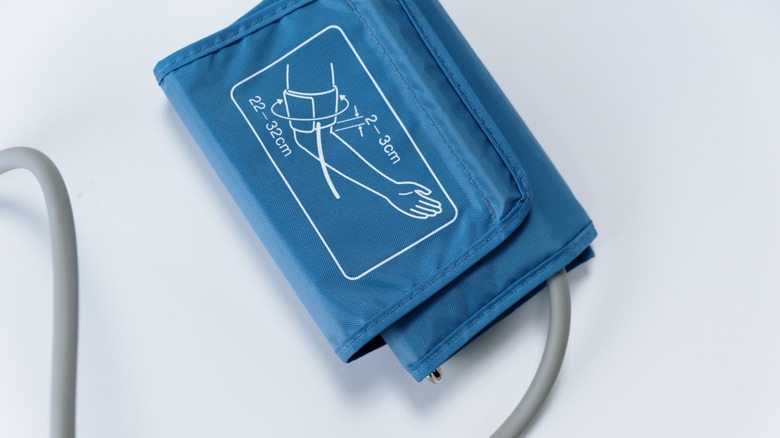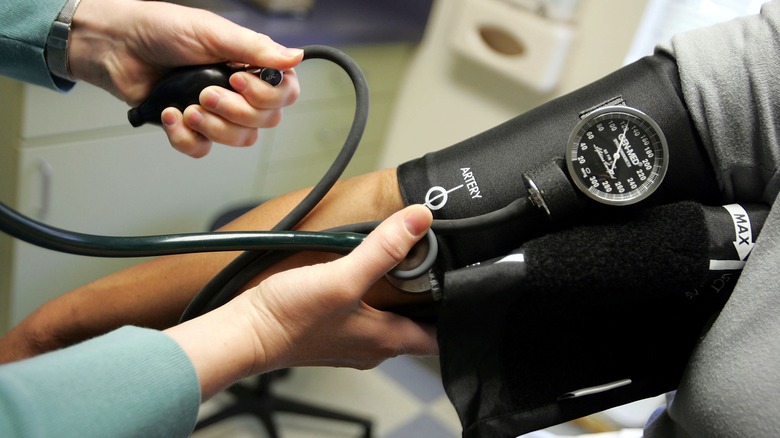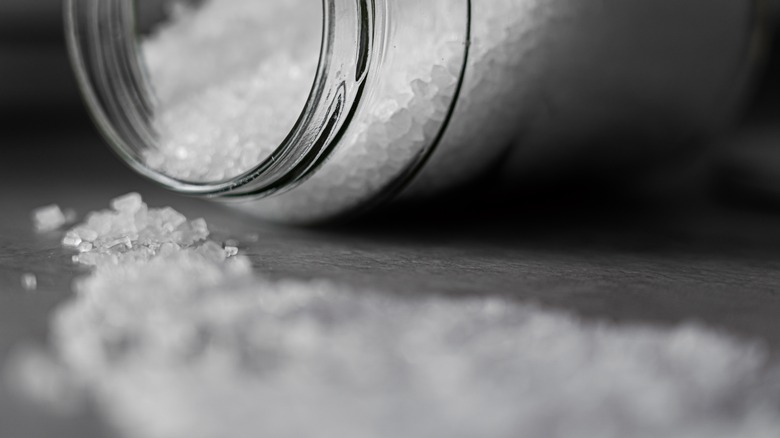Mistakes You May Be Making When Trying To Lower Your Blood Pressure
According to the Centers for Disease Control and Prevention, nearly half the adults in America suffer from hypertension, or high blood pressure. High blood pressure is a potential precursor to heart disease and stroke and is sometimes called the silent killer because it shows no symptoms (via the U.S. Food & Drug Administration). When you have hypertension, the force of blood pushing against the walls of your arteries as the heart pumps is higher than normal.
Until fairly recently, if you had a blood pressure reading of 140 over 90 or higher, you were considered to be hypertensive (via the American Heart Association). However, in November 2017, the American Heart Association changed that number to 130 over 80.
Treatment for hypertension starts with lifestyle changes such as losing weight, watching what you eat, decreasing your salt intake, quitting smoking, cutting back on alcohol, and exercising regularly (via the Mayo Clinic). In addition, medication may be prescribed to lower blood pressure. However, even with these positive changes, there could be things you're doing, without even knowing it, that are hindering your hypertension management efforts.
Check your numbers and watch what you drink
Good management of hypertension starts with knowing your numbers. According to the Mayo Clinic, If you aren't checking your numbers regularly, you can't expect to know how you're helping or hindering your management of hypertension. In addition to your doctor's office, you can check your blood pressure regularly by purchasing a home monitor.
Hydration is a big step in managing hypertension, as a 2019 study published in Nutrients indicated that dehydration can lead to the thickening of the blood and subsequent hypertension. However, overhydration can also cause swelling of your cells, leading to high blood pressure (via WebMD). The amount of water you should drink per day varies depending on your weight, the climate that you live in, and your activity levels.
In addition to water, it's also important to manage your alcohol consumption, as the American Heart Association states that alcohol intake can have a significant impact on your blood pressure. They recommend that people with hypertension limit their alcohol intake to just two drinks a day for men and one drink a day for women.
Be mindful of your salt intake, and where it's coming from
It's no secret that a high sodium diet can lead to elevated blood pressure (via the CDC). A 2013 study from the Cochrane Database of Systematic Reviews showed that, once a person with hypertension reduces their salt intake, their blood pressure can drop within weeks. However, just taking the salt off your table is not enough, according to the Cleveland Clinic. More than 70% of the sodium in your diet comes from processed and packaged foods such as frozen or canned foods, deli meats, and snack foods. Check the labels of everything you buy and choose low-sodium or sodium-free options whenever possible.
You should also be getting regular sunlight, according to a 2020 study published in the Journal of the American Heart Association. The study took a look at more than 300,000 patients and indicated that exposure to sunlight was associated with lowered systolic blood pressure.
As you check your blood pressure, make sure that you are doing it correctly to ensure an accurate reading (via Cape Cod Healthcare). If you have a full bladder before taking your blood pressure, it can increase your reading by 10 to 15 points. You should also never wrap the cuff over clothing, as that can throw off your number by up to 50 points. Proper posture is also important. Slouching, sitting with crossed legs, and not putting your feet flat on the floor can all lead to an inaccurate reading.



